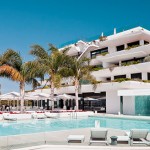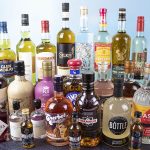30 things to know about 300 years of Martell Cognac!
When I was formulating how to write about 300 years of Martell, there were elaborate plans for flowing narrative and beautiful storytelling. But as I began to write it struck me that as a relatively novice Cognac drinker it would be better to identify the truly interesting fact vignettes that I gleaned over an amazing 3 days of Martell tricentennial celebrations.
So here goes. 300 years of Martell summed up in 30 easily digestible bite size chunks.
- Martell really know how to throw a great party!
- Martell’s tricentennial celebrations were held in the spectacular Palace of Versailles and were 3 years in the planning. Martell have been a notable contributor to the Palace’s spectacular restoration since 2007. On a separate note, the Palace of Versailles has to be one of the most impressive buildings in Europe….
- The French air force provided the first ever air display over the Palace of Versailles. A tricolore of smoke spectacularly traversed the skies.
- Martell Cognac can form the basis of some rather delicately flavoured cocktails!
- Dinner courses of tinned lobster served in a sandwich (with construction instructions), smoked chicken, bbq ribs and deconstructed lemon tart, washed down with a plethora of velvety cognac blends and wines made for spectacular culinary theatre. Each course was accompanied with subtle aromas atomized from the ceiling above, whilst animated international visuals danced along the walls during each course.
- Martell is the oldest Cognac brand, dating back 300 years. Remy Martin dates back 250 years.
- Jean Martell was originally from Jersey and a dealer in wines. As a merchant he decided to base his business in Cognac and subsequently focused on principally exporting Cognac to the English market.
- Jean Martell’s original house can be visited as part of the official Martell distillery tour.
- It is said that Napoleon’s doctor drank Martell Cognac.
- Jean Martell and those who managed Martell after his death, kept meticulous records of production and sales. There are almost 5km of archives, and to this day a dedicated archivist maintains this marvelous historical record.
- The archive has some quite remarkable records of the earliest Martell advertising. Restorative or medicinal claims were very much de rigueur for the day!
- 97% of Cognac is exported out of France. Surprisingly the French don’t currently drink a great deal of Cognac, albeit that could be beginning to change.
- Cognac is made from a special type of grapes, which offer a lowish alcohol yield of around 7%.
- Martell have their own 400 acre vineyard, but the vast majority of grapes (85%) are sourced from over 1,500 independent farmers in the region, who often have generational links to Martell.
- The Martell vineyard has a rich clay soil mixed with flinty stones.
- Each line of vines are alternated with grass and bare soil. This allows the natural ecosystem and pollination systems to flourish in the grass, whilst maximising the nourishment each vine can draw from the soil.
- The vineyards periodically suffer from a disease. Roses show signs of disease 8 days before the vines, so they are planted at the head of each row. A bit like canaries!
- As vines die off each year, they are replaced. The entire vineyard is ripped up and replanted every 40 years or so.
- Grapes are harvested around the end of September by a machine that vibrates the vine to remove the grapes. Each vine produces approximately 6 kg of grapes.
- The distillery process begins around October time and finishes around March. The eau de vie (water of life) is a double distillation of the grapes which forms the basis of Martell Cognac. No other distillation process at the Martell distilleries, is permitted outside of this period.
- Cognac is distilled twice and initially produces a pungent, clear liquid (eau de via).
- Cognac is stored within oak barrels, with wide grain or narrow grain oak used. The different grains offer different rates of absorption and evaporation. Approximately 2% of alcohol from each barrel evaporates each year.
- Certain Martell employees are required to test the various maturing batches of Cognac every day. When the optimal maturation and taste is achieved the Cognac can then be removed from the barrel and stored to halt the process and maintain the optimal flavour.
- A tulip shaped glass is optimal for drinking Cognac. This shape enables maximum aroma into the nose, which significantly enhances the perceived flavour. Martell’s master blender indicated that Cognac is best tasted before lunch or dinner.
- The final Martell Cognacs are blended from different ages and different Martell distilleries based in the region. Differences in the distillations between distilleries is encouraged, as this makes a better blend.
- Many of Martell’s blends have a variety of smells and flavours that can resemble candied fruit, ginger bread and spices like cinnamon. The Cordon Bleu Martell blend incorporates stronger floral and fruity notes and is probably my personal favourite of the Martell products we tasted.
- A variety of premium Martell products have been produced for the tricentennial anniversary. These include Martell Premier Voyage, Martell Cordon Bleu, Martell XO Exclusive Tricentenaire Edition and Martell Assemblage Exclusive of 3 Vintages.
- If you’re buying Cognac for investment purposes, it’s recommended that bottles are stored in a dark, cool place (at around 11 – 14 C).
- The Martell family acquired the famous Chateau de Chanteloup in 1838. The Martell company continue to use the house for honoured guests who want to explore the French art of living, including of course gastronomy!
- Martell Cognac goes beautifully with Macaroons! These Pierre Herme’ Macaroons are probably the finest I have ever tasted…




















